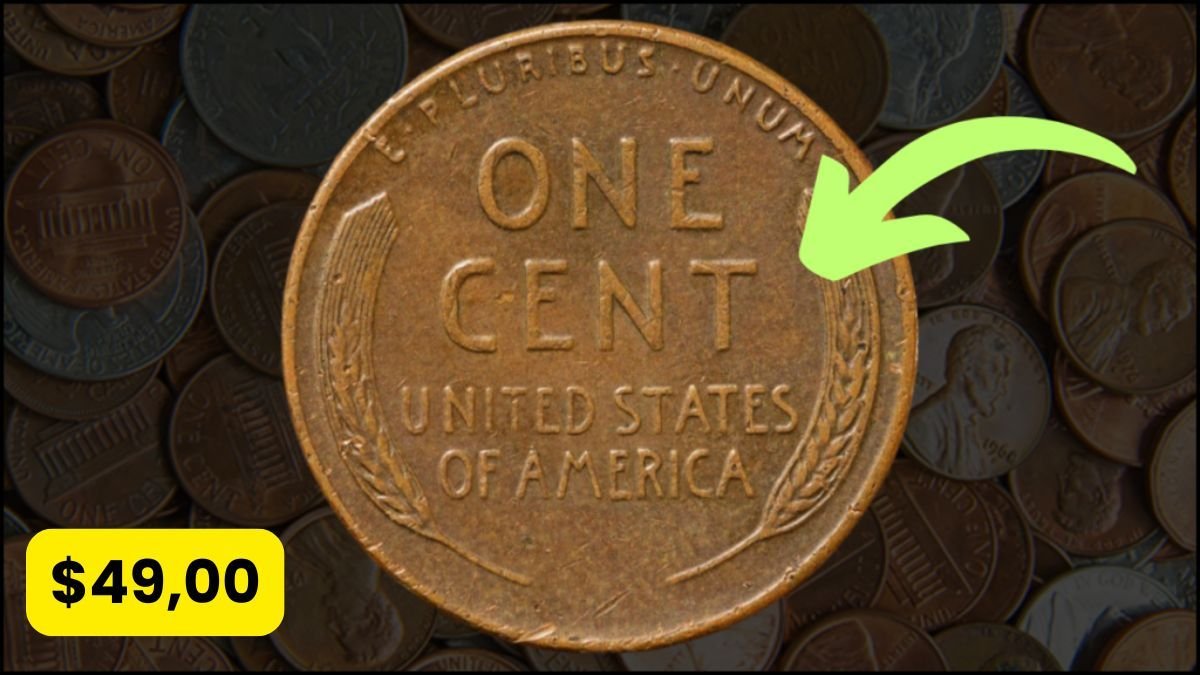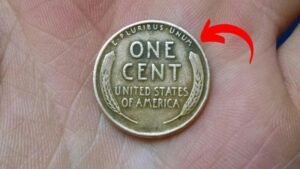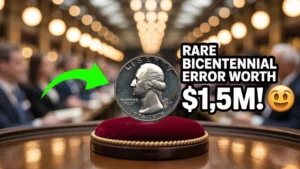Imagine picking up a penny from your change jar and discovering it’s worth $49,000. Sounds like a dream, right? The Lincoln Wheat Penny, a seemingly ordinary coin, holds secrets that could turn pocket change into a fortune. Some rare versions are still in circulation, waiting to be found. Read on to uncover the mystery and learn how to spot one!
What Is the Lincoln Wheat Penny?
The Lincoln Wheat Penny, also called the Wheat Cent, is a one-cent coin minted by the U.S. from 1909 to 1958. It features Abraham Lincoln’s profile on the front and two wheat stalks on the back, symbolizing prosperity. But some of these coins, due to rare errors or low mintages, are worth thousands—like the elusive $49,000 penny.
What makes this coin so special? It’s not just its age or design—it’s the hidden mistakes and rarity that turn a humble penny into a collector’s dream. Stick with us to unravel the secrets behind its jaw-dropping value.
The Fascinating History of the Lincoln Wheat Penny
In 1909, the U.S. Mint broke tradition. For the first time, a real person—Abraham Lincoln—appeared on a circulating U.S. coin to mark his 100th birthday. Designed by Victor David Brenner, the penny’s wheat stalk reverse gave it its iconic name. It was minted until 1958, when the Lincoln Memorial design replaced it.
During World War II, copper became scarce, leading to a major shift in 1943. Pennies were struck in zinc-coated steel to save copper for the war effort. But a few copper pennies were mistakenly minted that year, creating one of the rarest coins in U.S. history. These errors, along with others, fuel the legend of the Lincoln Wheat Penny.
Why Is This Penny Worth $49,000?
The $49,000 Lincoln Wheat Penny is typically a rare variant, like the 1955 Doubled Die Obverse or a high-grade 1909-S VDB. Rarity, condition, and minting errors drive their value. For instance, the 1955 Doubled Die, caused by a minting error, shows a blurry date and text, making it a collector’s gem. The 1909-S VDB, with only 484,000 minted, is another prized find due to its low production and the designer’s initials controversy.
Here’s a quick look at what makes these coins valuable:
| Feature | Why It Matters |
|---|---|
| Minting Errors | Errors like double dies or wrong metal (e.g., 1943 copper) make coins ultra-rare. |
| Low Mintage | Coins like the 1909-S VDB had limited production, increasing scarcity. |
| Condition | Pristine, uncirculated coins (graded MS-65 or higher) fetch top dollar. |
| Historical Context | Wartime errors or early designs tie coins to significant historical moments. |
These factors combine to push certain Wheat Pennies into the $49,000 range—or even higher. The thrill? Some are still out there, hiding in plain sight.
How to Find a Valuable Lincoln Wheat Penny
Could a $49,000 penny be in your change? It’s possible! Wheat Pennies from 1909 to 1958 are still found in circulation, especially in older coin rolls or family collections. Here’s how to start your treasure hunt:
- Check Your Change: Look at every penny’s date and mint mark (under the date: “S” for San Francisco, “D” for Denver, none for Philadelphia).
- Focus on Key Years: Watch for 1909-S VDB, 1914-D, 1931-S, or 1955 Doubled Die.
- Examine for Errors: Use a magnifying glass to spot doubled text or unusual coloration (e.g., a 1943 penny that’s not silver-colored).
- Visit Banks: Ask for rolls of pennies to search through.
- Check Old Collections: Estate sales, flea markets, or grandma’s coin jar might hold treasures.
If you find a promising coin, don’t clean it! Cleaning can ruin its value. Instead, store it carefully and consult a professional grader like PCGS or NGC.
Jaw-Dropping Facts About Rare Wheat Pennies
The Lincoln Wheat Penny isn’t just pocket change—it’s a numismatic legend. Here are some mind-blowing facts:
- 1943 Copper Penny Rarity: Only about 20 copper 1943 pennies are known to exist, with some fetching over $1 million at auction.
- 1909-S VDB Scarcity: Just 484,000 were minted, and pristine examples can sell for $100,000 or more.
- 1955 Doubled Die Value: A well-preserved 1955 Doubled Die penny sold for $25,000–$50,000 in recent years.
- Real-Life Finds: In 2021, an Ohio man found a 1955 Doubled Die penny in coffee shop change, selling it for $25,000.
- Wartime Legacy: The 1943 steel pennies reflect WWII resource conservation, making them historical artifacts.
| Rare Wheat Penny | Key Feature | Estimated Value |
|---|---|---|
| 1909-S VDB | Designer’s initials, low mintage | $10,000–$100,000+ |
| 1914-D | Low mintage, Denver Mint | $5,000–$150,000 |
| 1943 Copper | Minted in copper by mistake | $100,000–$1M+ |
| 1955 Doubled Die | Blurry date and text error | $25,000–$50,000 |
These numbers show why collectors are obsessed—and why you should check your pennies!
Expert Tips for Coin Hunters
Want to join the hunt for a $49,000 Lincoln Wheat Penny? Here are insider tips from numismatic experts:
- Learn the Key Dates: Memorize rare years like 1909-S VDB, 1914-D, 1931-S, and 1955 Doubled Die.
- Use a Magnifier: A 10x loupe helps spot errors like doubling or missing mint marks.
- Test 1943 Pennies: If a 1943 penny doesn’t stick to a magnet, it might be the rare copper version.
- Get Coins Graded: Professional grading by PCGS or NGC boosts value and authenticity.
- Join Coin Communities: Forums and local clubs share tips and news about rare finds.
- Be Patient: Finding a valuable penny is rare, but the thrill of the hunt keeps collectors hooked.
These tips can turn a casual glance at your change into a life-changing discovery.
Frequently Asked Questions
Are Lincoln Wheat Pennies still in circulation?
Yes, though rare, some Wheat Pennies from 1909–1958 still appear in change, especially in older collections or bank rolls.
How do I know if my penny is valuable?
Check the date, mint mark, and condition. Look for errors like doubled text or unusual metal (e.g., 1943 copper). Get it appraised by a pro.
Can cleaning a penny increase its value?
Never clean a coin! Cleaning removes the original patina, drastically reducing its value to collectors.
Where can I sell a rare Wheat Penny?
Use certified dealers, auction houses like Heritage Auctions, or online platforms like eBay after professional grading.
Is a $49,000 penny realistic?
Yes, coins like the 1955 Doubled Die or 1909-S VDB in top condition can fetch $49,000 or more, depending on grading and market demand.
Conclusion: Your Next Penny Could Be a Treasure
The Lincoln Wheat Penny is more than a coin—it’s a piece of American history with the potential to change your life. From wartime errors to low-mintage gems, these pennies prove that small change can hold big secrets. A $49,000 penny could be hiding in your wallet, coin jar, or local bank roll. So, grab a magnifying glass, check your change, and join the treasure hunt. Who knows? Your next penny might be a fortune in disguise. Share this article with fellow coin enthusiasts, and let us know in the comments if you’ve ever found a rare coin!



